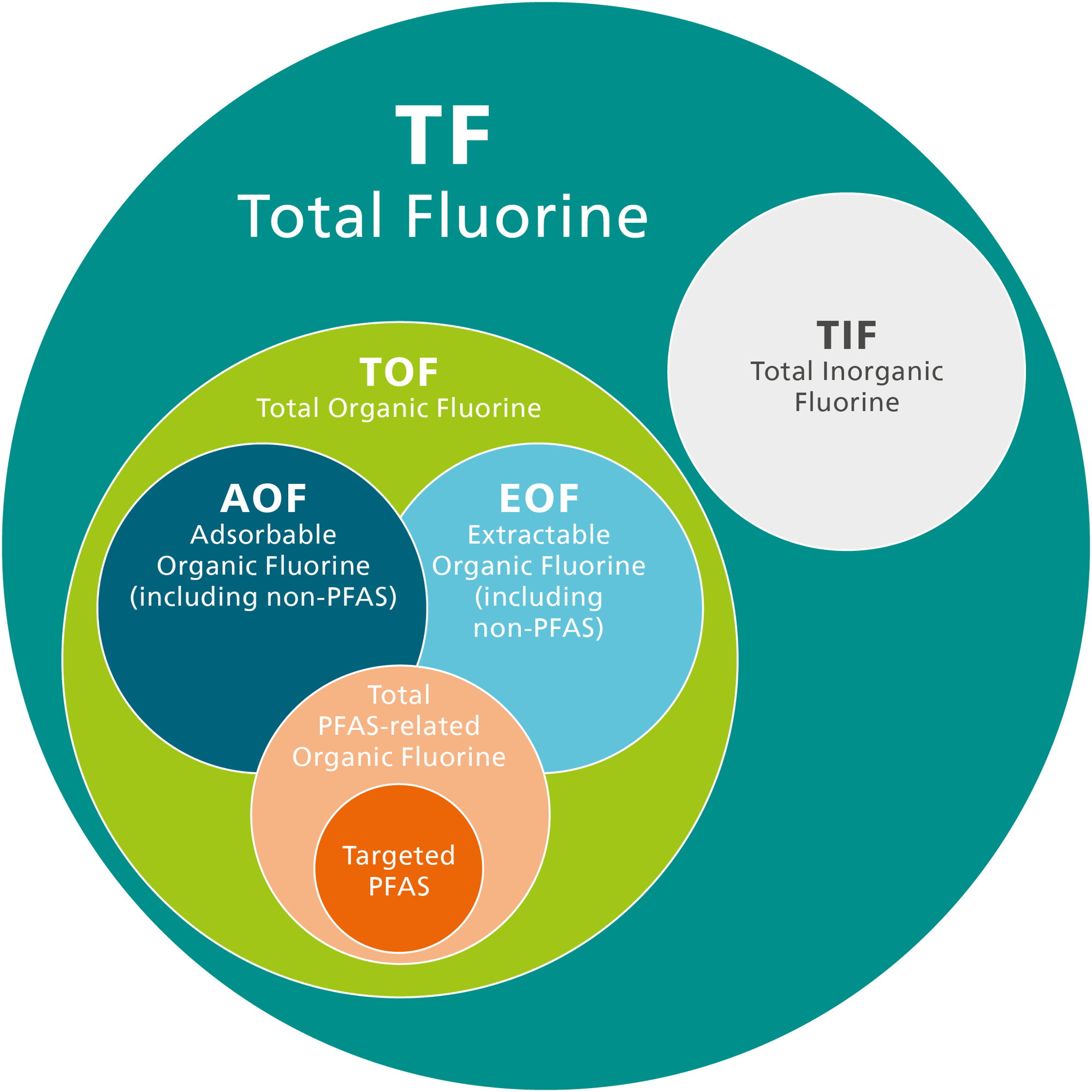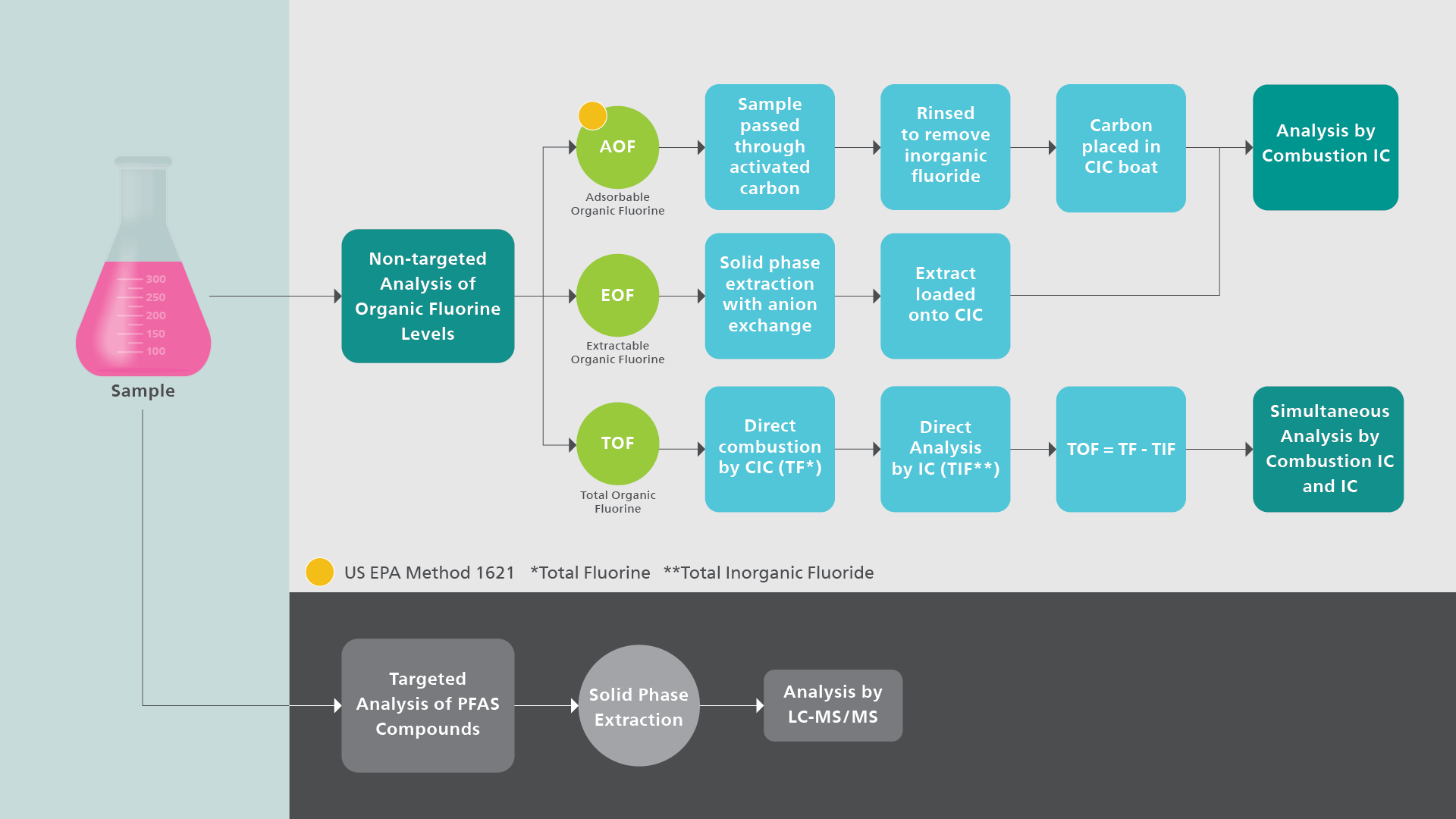PFAS 101: The Essentials
PFAS, or per-and polyfluoroalkyl substances, are a group of man-made chemicals that are found in water, soil and everyday products. Fluorine-containing compounds have had an important, positive impact on our society for countless consumer products and technologies. These same compounds, however, present significant challenges when they move into the environment, the water supply and ultimately the very society they were intended to benefit.
A solid foundation in PFAS basics is essential for exploring the analytical methods used to evaluate environmental impact and regulatory compliance. Historically, LC-MS/MS has been the approach for evaluating specific PFAS compounds. These compounds are represented in the dark orange Targeted PFAS on the left. However, the growing number of these compounds has reached nearly 15,000 according to a chemical database (CompTox Chemicals Dashboard) maintained by the U. S. EPA and keeping up with the necessary standards to analyze each of these is impractical. And, yes, while some of these compounds are known toxins, others remain under investigation that will take years to complete.
In the short and mid-term, the complete profile of fluorine determined using Combustion Ion Chromatography (CIC) gives us a better overall picture of Total Organic Fluorine as represented by the green circle.

Overview of Analytical Approaches
There are various methodologies available for analyzing PFAS and other fluorinated compounds. Non-targeted analysis of organically bound fluorine using Combustion IC continues to gain acceptance as a screening technique to show the full scope of contamination. There are multiple approaches to non-targeted screening for organic fluorine, with AOF currently receiving the most attention. The US EPA has published Method 1621 as a standard for determining adsorbable organic fluorine in aqueous matrices using CIC.



